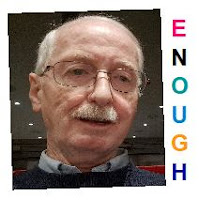I had participated in an Education, Technology & Learning ETMOOC a few month earlier and was impressed by their participation map. I shared that in the CLMOOC conversation and they created their own. You can see the 2013 map below. Visit this page and see maps from 2013 to 2017.
 |
| 2013 CLMOOC participation map |
cMOOCs are idea sharing events. If you can participate long enough you learn new ideas that might be applied to your own work. You can also build friendships with people living in different states and countries, as I have over the past 12 years. The Mentoring Summits have a similar purpose, but when there are 1000 people in the room, you really only connect with those you rub elbows with, if then.
While the Summit has some features that encourage registered participant interactions, this is not open to the public and I'm not sure how much it continues after the summit. I certainly have never found a #MentorSummit discussion group on any of my social media channels that operated in a similar way the connected learning cMOOCs have.
This is more important in 2025 than ever before. Just this past week the President issued an executive order ending Federal grant funding for thousands of organizations. Youth serving programs, including mentoring and tutoring, will be hit hard.
I started leading a volunteer-based tutor/mentor program in 1975 (see history) while I held a full time job with the Montgomery Ward company. While our program grew to include over 300 pairs of youth and volunteers by 1990, funding was not an issue because all of the leaders were volunteers.
However, in 1990 when I converted this program to a 501-c-3 non profit and needed to raise money to pay salaries for myself and others to stay involved, the funding of non profits began to become a real issue. Over the years as my personal frustration grew, I've built a library of articles that show the challenges small non profits face in finding consistent operating funds, and I’ve built a library of articles that show how others think on this topic.
I created the Tutor/Mentor Connection in 1993 and the Tutor/Mentor Institute, LLC in 2011 to influence how youth serving programs are funded. I've posted many articles tagged 'philanthropy' on this blog that show my thinking. I hope you'll take time to look at them.
This is a map showing nearly 400 foundation (corporate and private) in the Chicago region and Eastern part of the United States who I put on my mailing list between 1993 and 2005.
This map shows a close up of the Chicago region so you can get a better sense of how many foundations I was reaching out to.
My organization never had more than 3 or 4 people on staff, and never had a full time professional development officer. I was CEO, chief innovator, chief marketing officer, newsletter writer, grant writer, janitor. Yet every year I was challenged to write letters of introduction, letters of inquiry, grant requests, grant reports, each with different requirements and different questions.
None of the grants was larger than $50,000 and most were in the $1,000 to $10,000 per year range. Some were for general operating expenses, which I could use flexibly to build the organization, while many focused specifically on activities of the Cabrini Connections direct service program or the Tutor/Mentor Connection.
In total I raised more than $6 million between 1993 and 2011, with a peak of $500,000 in 2000. This money split with 40% funding the Cabrini Connections direct service program, 40% the Tutor/Mentor Connection, and 20% funding operating and fundraising expenses. With no multi-year commitments, each year since about 1998 I started from zero in raising $300 to $400,000 from a wide range of donors.
Events like the National Mentoring Summit, and their websites, are part of a number of organizations who take on the role visualized by the blue box in this graphic. They collect and share information and bring people together to learn from each other. They advocate for public funding of youth serving programs. Many have directories on their websites that people can use to find places to get involved.
With more than 200 youth serving organizations in Chicago offering various forms of tutoring, mentoring and non-school support, we can have 200 development officers and/or Executive Directors reaching through resource lists to find foundations who will give them funds each year, which is a tremendous redundancy.
Or we can build strategies that educate and motivate donors and business partners to reach out and build proactive support systems for tutor/mentor programs in neighborhoods that need such programs.
Hopefully this will be discussed in face-to-face events, like the January Mentoring Summit and in statewide gatherings. And in on-line events like the cMOOCs that I've described.
We can do both. We can do better.
While I'm still here, you can help me keep sharing these ideas by visiting my "Fund T/MI" page and sending a small contribution.






























































